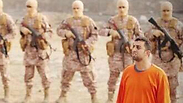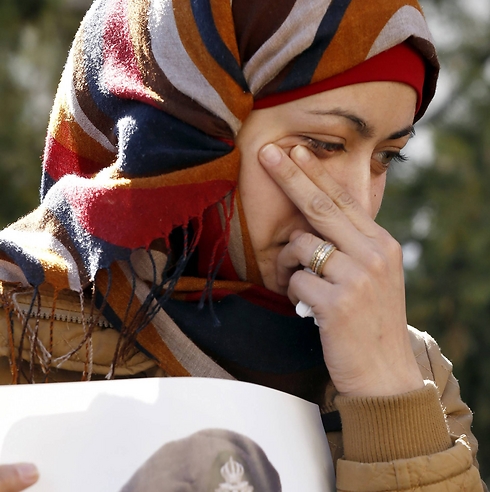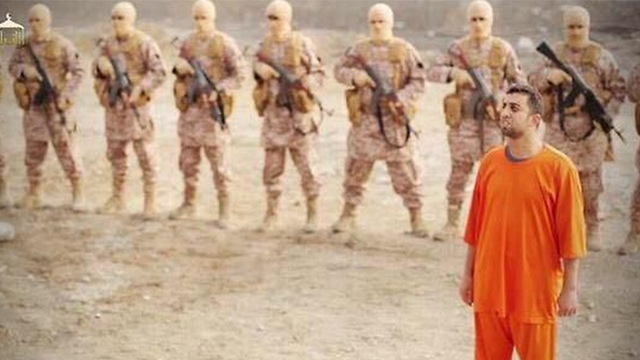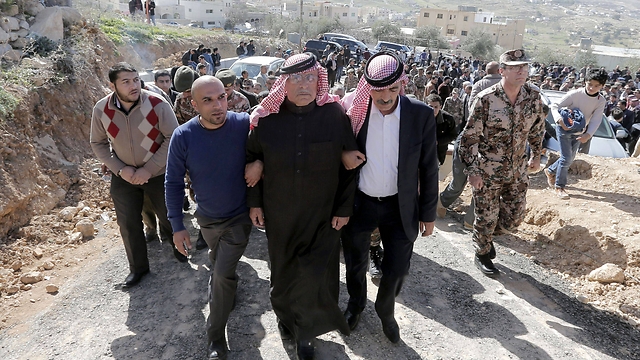
The men and boys of Raqqa watched the Jordanian pilot burn
Big screens were set up in IS stronghold of Raqqa in Syria to watch video of Jordanian pilot being burned alive at the same time the organization posted the execution online.
At exactly the same time, the organization posted online its sickening execution of 26-year-old Lt. Moa'ath al-Kassasbeh, the Jordanian F16 pilot downed on Christmas eve over IS-controlled territory. Media outlets around the world decided the video was too gruesome to be aired.
Not so in Raqqa, where male residents stood transfixed watching the entire 22-minute segment, many chanting "Allahu Ahkbar" and "Takbir" (another form of "God is greatest") as the caged Kassasbeh was consumed by flames. "I would have burnt the pilot with my own hands," said one boy who looked on in fascination as the clip was replayed over and over.
For the benefit of those living farther afield IS also distributed 4,000 copies of the video in the northern Iraqi town of Mosul.
The video seeks to justify burning Kassasbeh alive by showing footage of the air strikes launched by the US-led coalition in Syria since September. It shows Kassasbeh discussing the mission he was on when he was captured.
It now transpires that while Kassasbeh’s family and government were pleading with his captors to spare his life, the pilot was long dead. Jordanian authorities may have suspected as much when they kept demanding proof of life in return for freeing Sajida al-Rishawi, the jailed Iraqi woman terrorists whose freedom IS was demanding in exchange for Kassasbeh.
The decision to kill the Jordanian hostage, probably on January 3, appears to have been made after a failed attempt by Jordanian commandos to free him. An activist in Raqqa confirmed to i24news that he had seen helicopters landing and heard what sounded like a firefight which lasted at least 20 minutes on the night of January 2nd.
The activist told i24news that a day or two after the execution, Islamic State fighters, including a top commander, were seen at a public location – celebrating.

The person who overheard the murderers celebrating told friends that Kassasbeh had been burnt alive in Raqqa. On January 8, a group calling itself "Raqqa is Being Slaughtered Silently" tweeted that Kassasbeh had been murdered. But, “none of us could believe it, because in our religion, it is forbidden to burn anyone,” the activist, who is a member of the group, told i24news.
Throughout January, Jordan and its allies sought clues about al-Kassasbeh’s condition in an effort to determine whether he was still alive. In a photo of the Japanese hostage Kenji Goto released by IS before they executed him on January 31, Kassasbeh seems to be standing inside a cage in front of a wall of beige bricks.
The same image is seen in the clip of the Jordanian’s execution, with the only difference being that in the photo Kassasbeh is seen sporting a beard whereas in the video he is not. Experts believe the beard was photoshopped, possibly in order to show that the pilot was still alive and had grown a beard.
Anti-IS activists “Raqqa is Being Slaughtered Silently” (RIBSS) also posted on their Twitter page that they have pinpointed the location where Kassasbeh was killed. The location, just a few hundred meters from the Euphrates River, was in the southern part of the city, where 30 women were killed in a previous coalition airstrike.
Kassasbeh knew his days were numbered. On a video posted on December 29, five days after his jet crashed, he is shown saying “they are going to kill me.”
The same interview, heard on the video, was published by IS’s English-language magazine, Dabiq. In it, Kassasbeh was quoted as discussing how the air strikes in Syria are coordinated between the countries of the US-led coalition. He said his role was to destroy anti-aircraft weapons on the ground and to provide cover for the strike aircraft.
Aymenn Jawad Al-Tamimi, fellow at the Middle East Forum and researcher at the IDC Herzliya academic institution, told i24news that the video is a “wholly new level of public advertisement of brutality, designed to terrorize the outside world, especially the Arab states taking part in the US-led coalition against IS.”
Thomas Pierret, a Syria specialist at the University of Edinburgh, said the way Kassasbeh was murdered was "a way to get maximum 'buzz', as it were. Burning alive is a sort of response to the 'fire from the sky' that F-16 jets represent."












